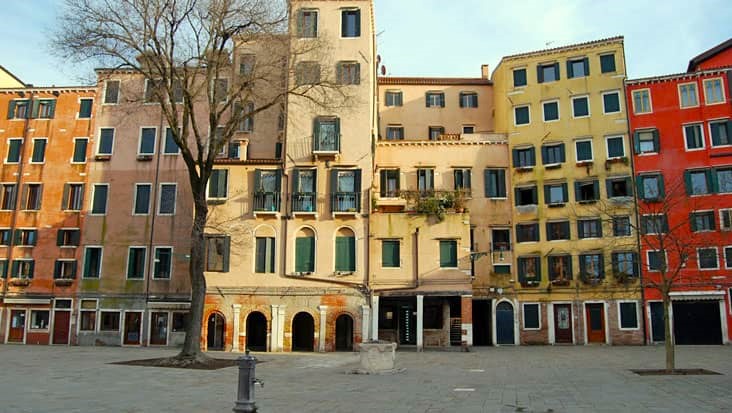This is Campo del Ghetto Nuovo, the main square of the Jewish area. Ghetto, like many international words, is a Venetian word, from the verb ‘gettare’, meaning to “cast iron”, as in the Middle-ages this area was in fact the city’s main iron-foundry. Established in the early 16th century as the first ghetto in the world, it marked the first time in history in which Jews had their own quarter. The Ghetto was cut off from the rest of the city, with its gates closed at sunset, where Christian guards, paid by the Jews themselves of course, kept watch; since they could not expand outside their confines, the Jewish community began to build upwards, as you can see from the unusually tall buildings in the campo. Venice found that the Ghetto was a profitable source of income, as Jews had to pay enormous sums of money just to stay in the city at all. Even in Venice Jews were not treated too well unfortunately, but they were certainly safer than anywhere else in Europe, given Venice’s opposition to any form of religious fanaticism, hatred or racism. Indeed, Shakespeare, whose Merchant of Venice is one the best depictions of Venice’s Jewish community, rightly said that “the trade and profit of this State consisteth of all nations.”






